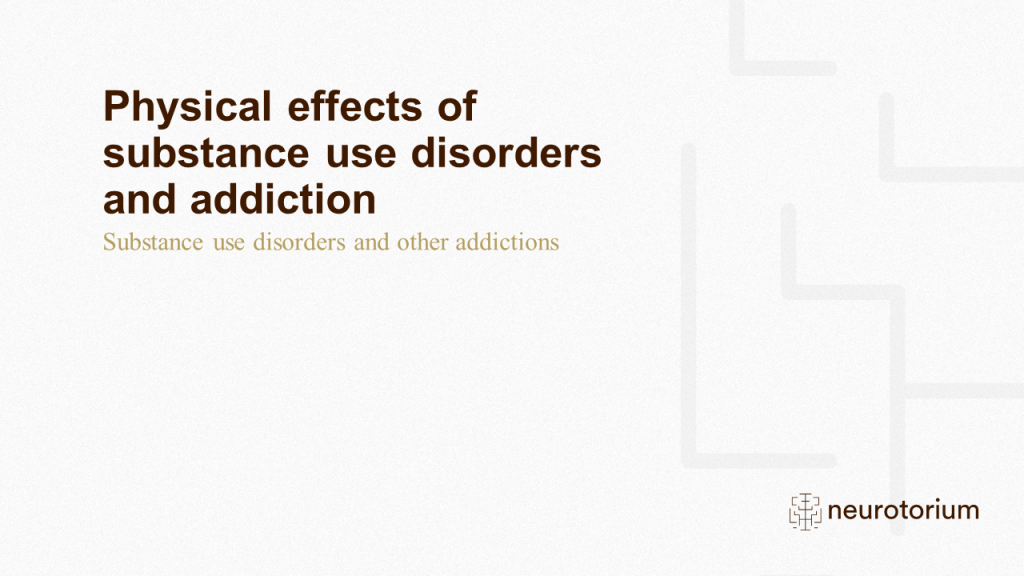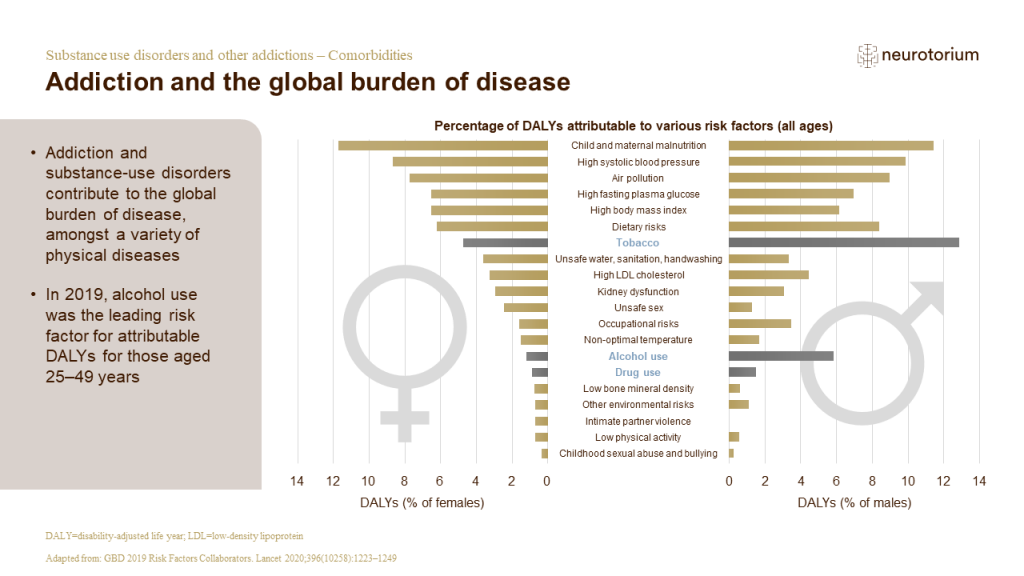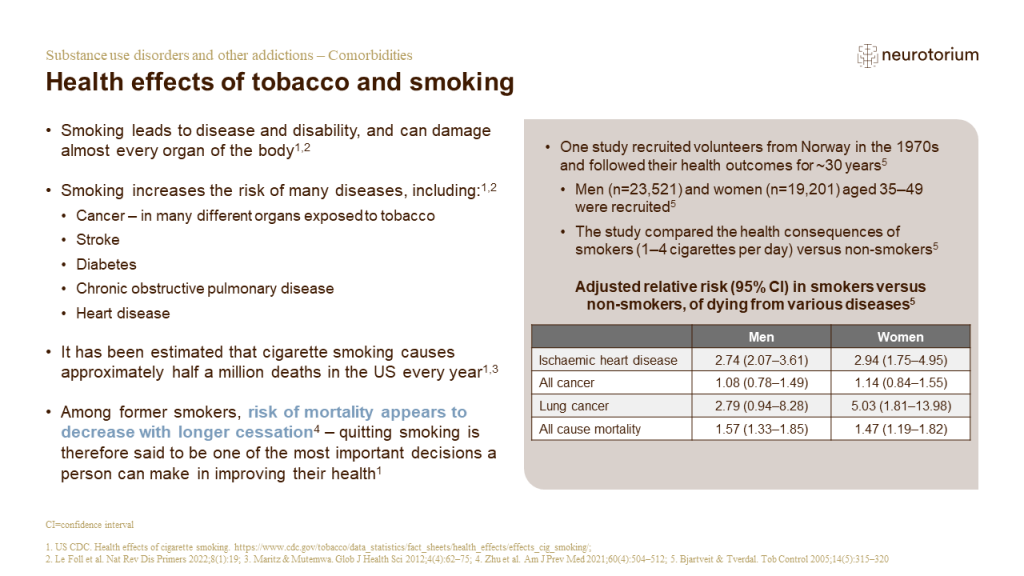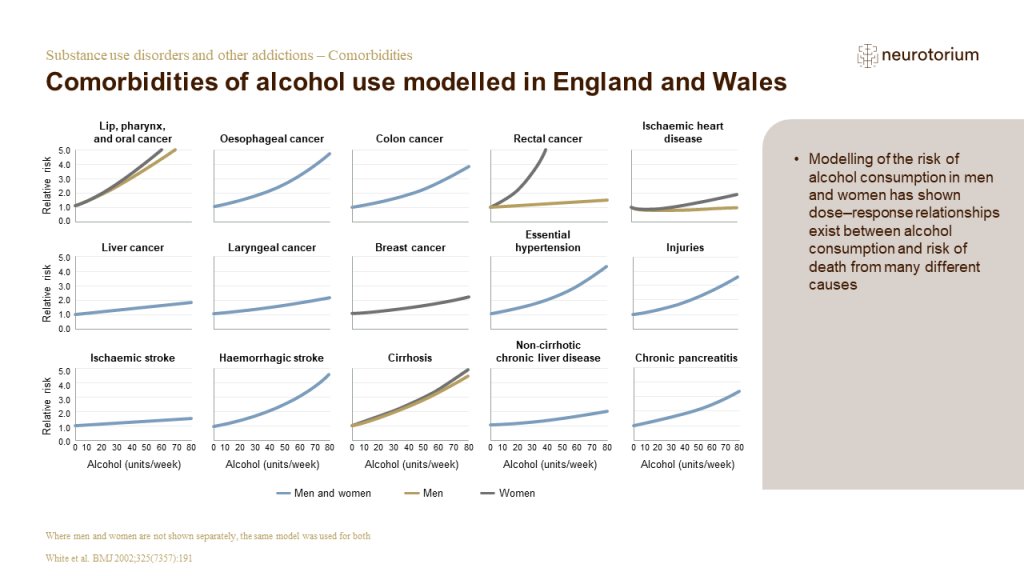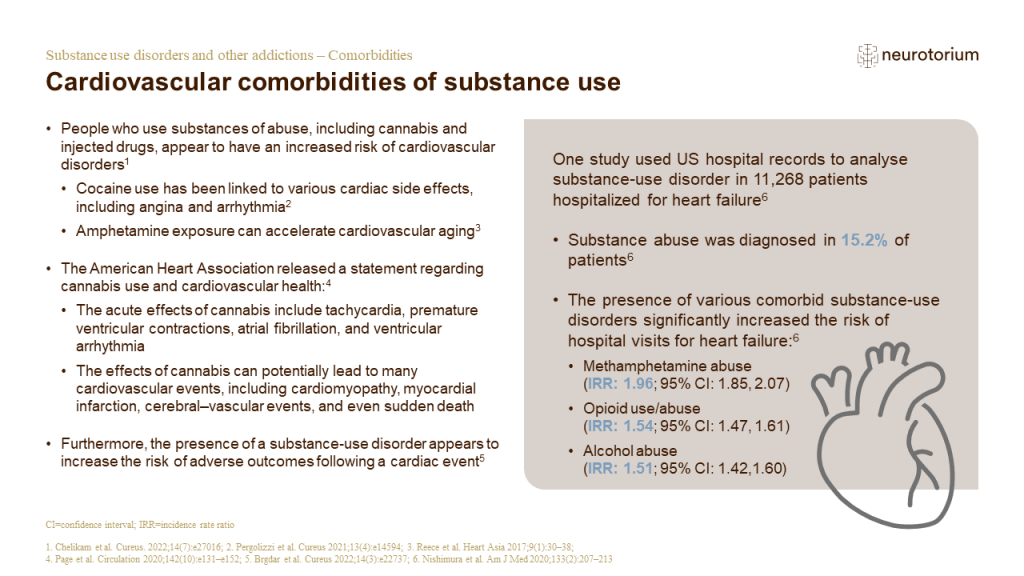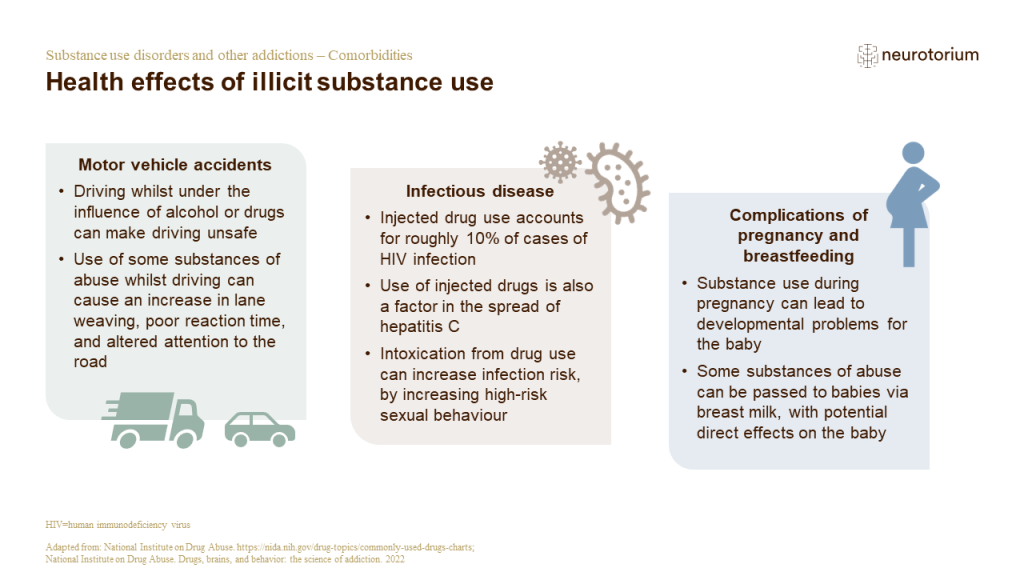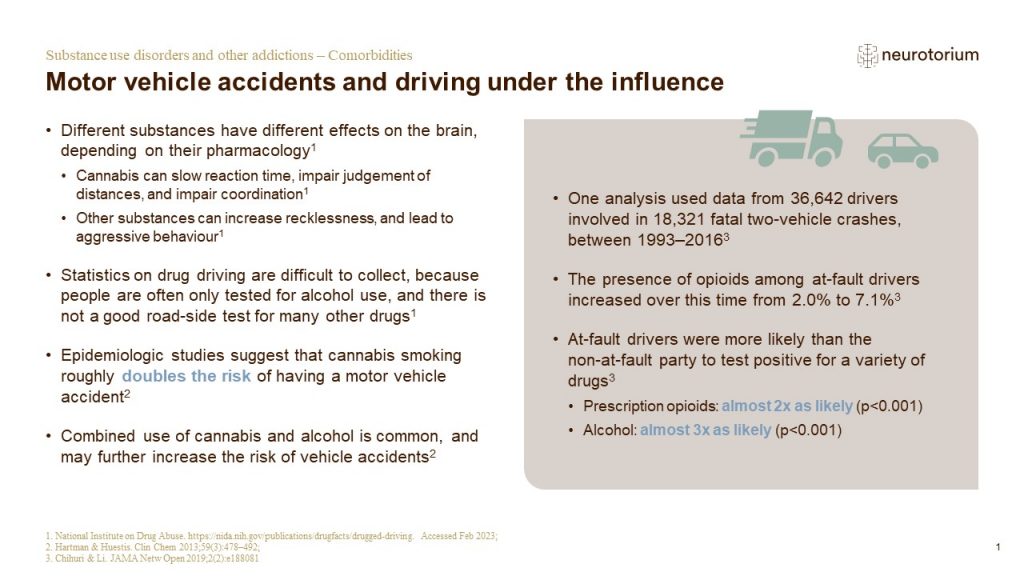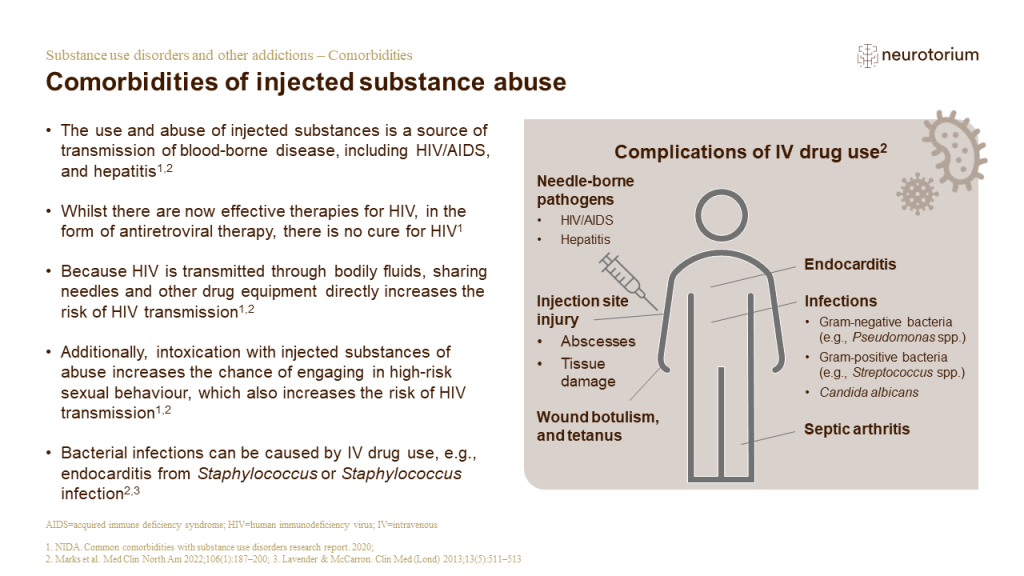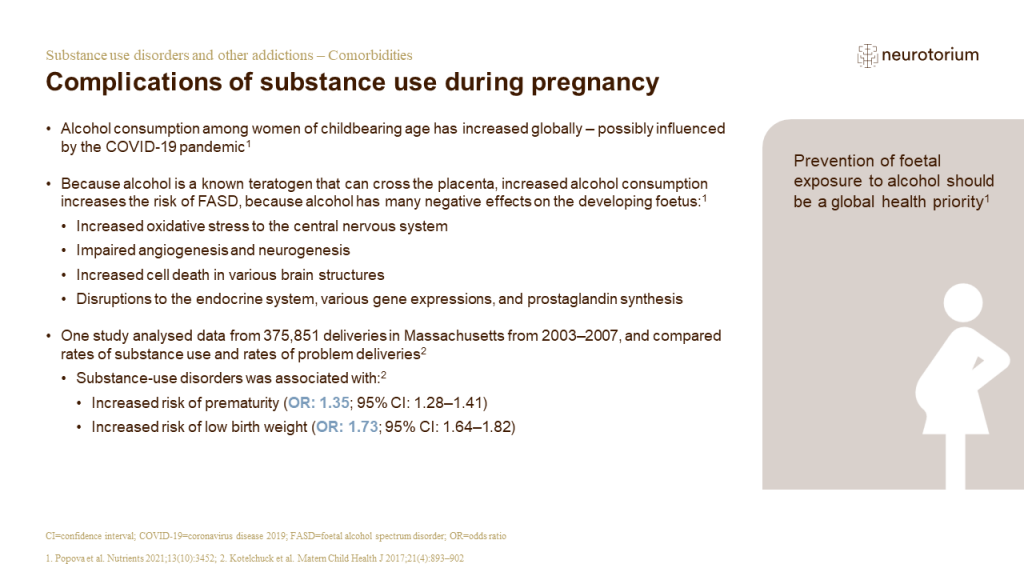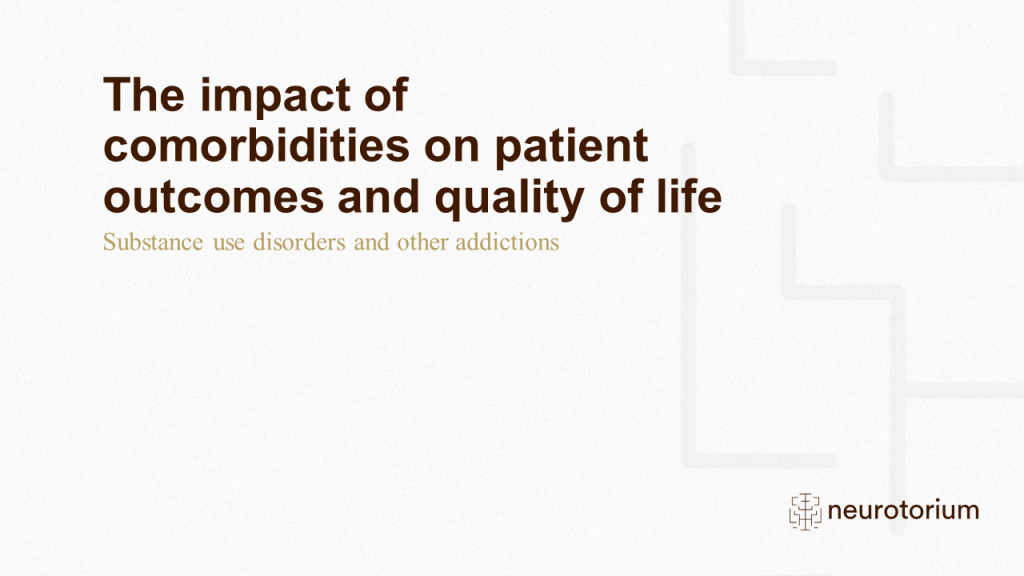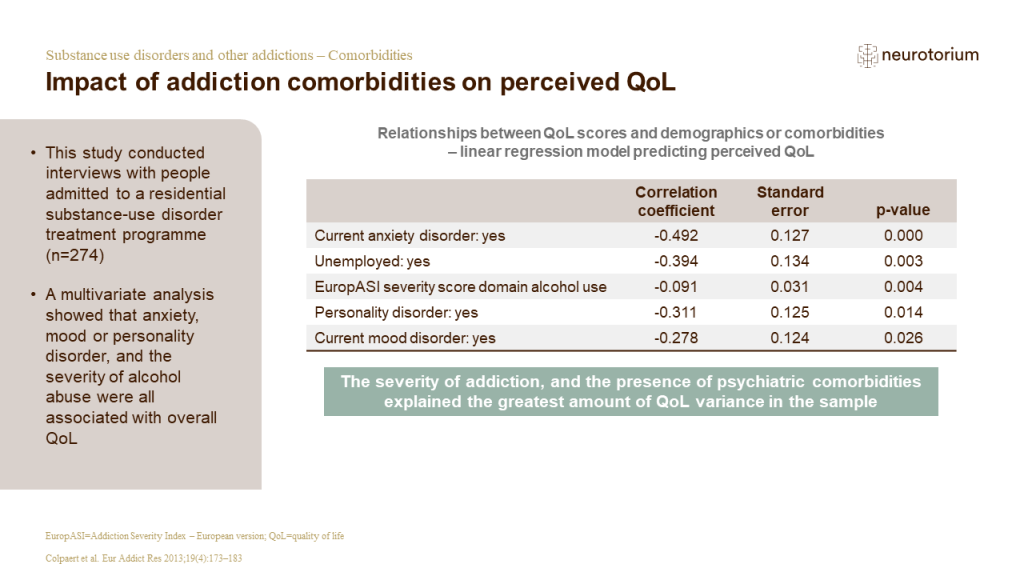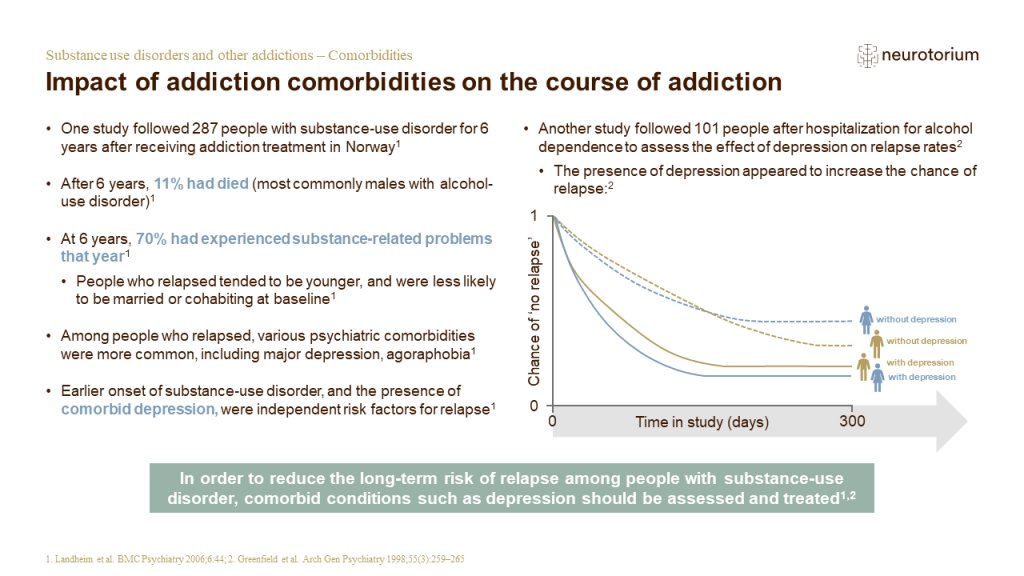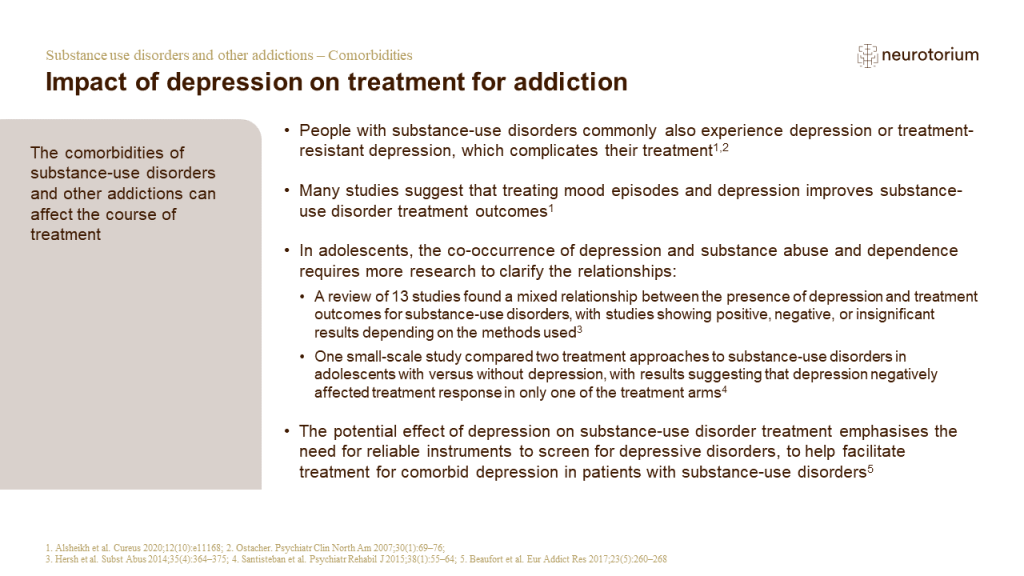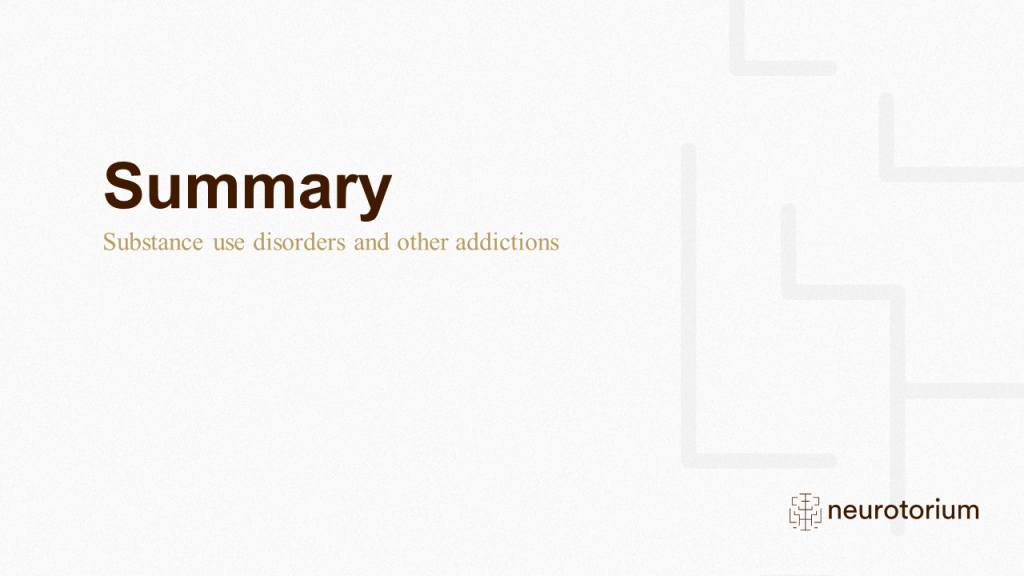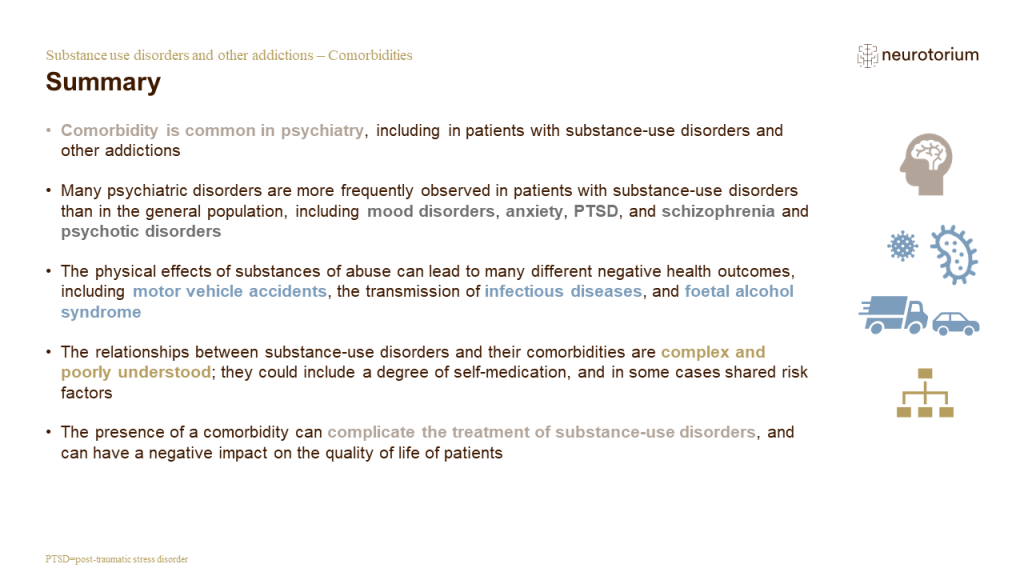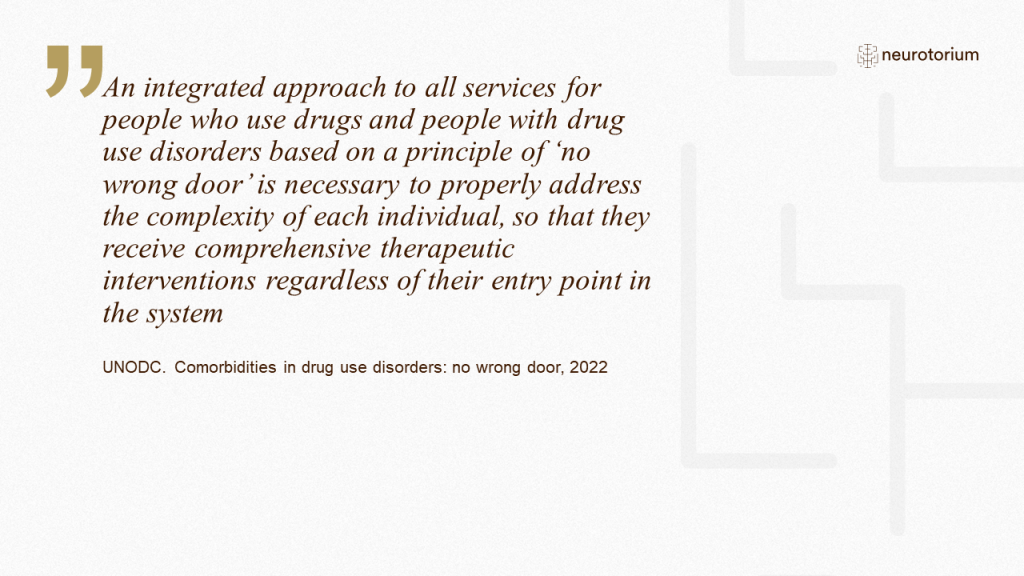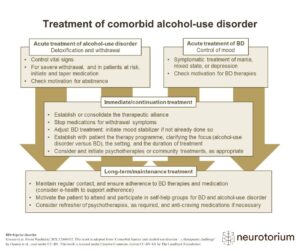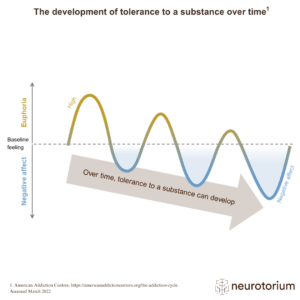Index for
slide deck
Comorbidities
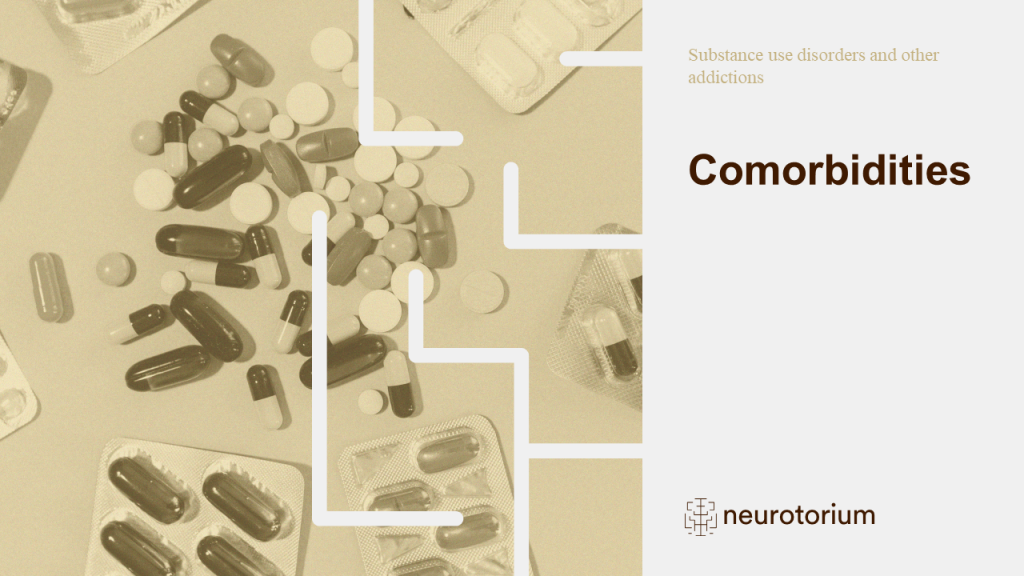
Comorbidities
Introduction
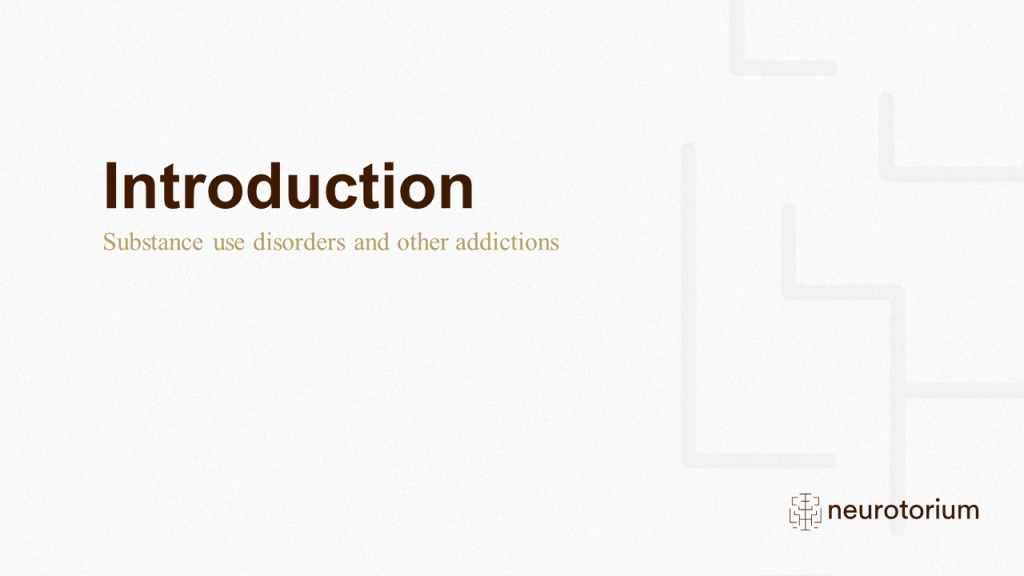
Substance-induced versus independently occurring disorders
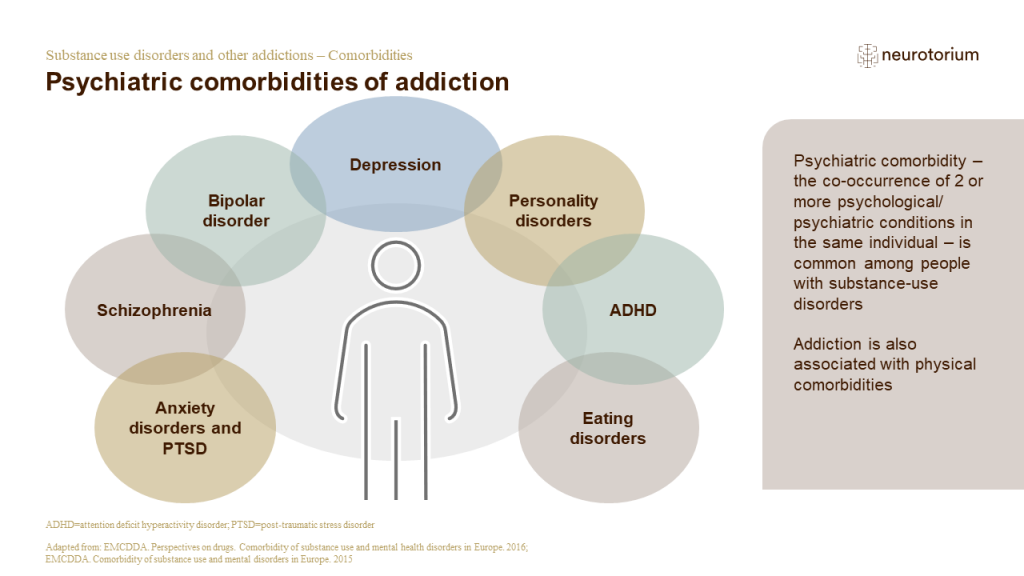
Psychiatric comorbidities of addiction
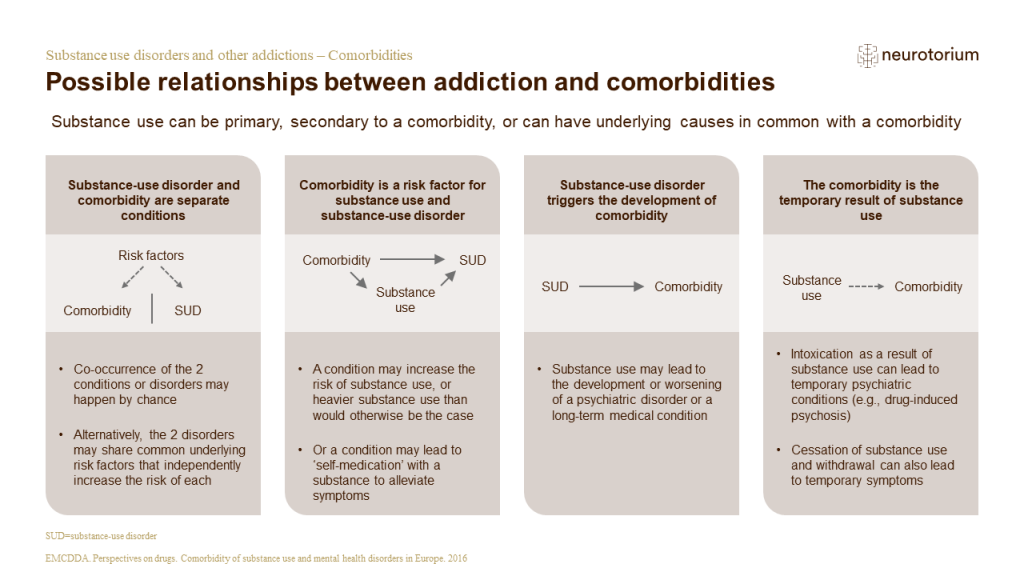
Possible relationships between addiction and comorbidities
The relationships between substance use and substance-use disorders and comorbid mental disorders are complex, and are therefore difficult to examine in studies. Clinically, the two important questions to consider regarding the co-occurrence of two disorders in one patien…
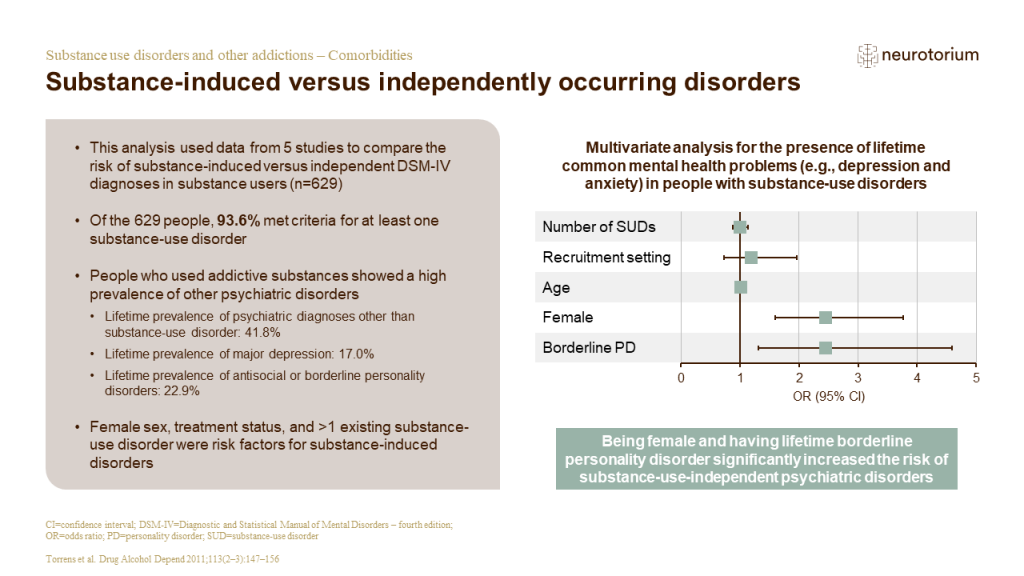
Introduction
Given the impact that comorbidities can have on substance-use disorder, and vice versa, this analysis attempted to interrogate these interactions by comparing the co-occurrences of independent and addiction-dependent disorder among a population of users of illicit substan…
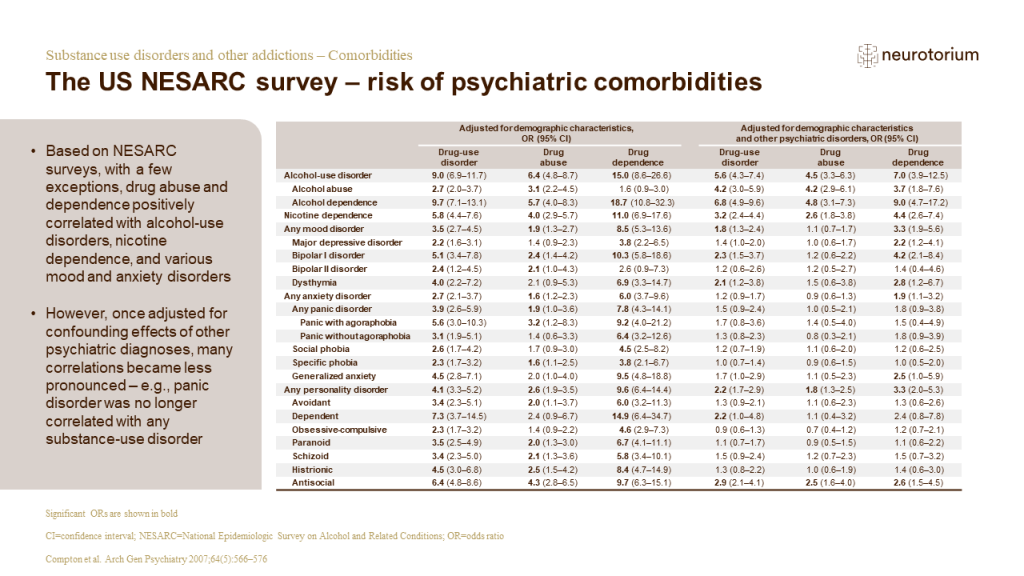
The US NESARC survey – risk of psychiatric comorbidities
Mental illness, substance use disorders and other addictions
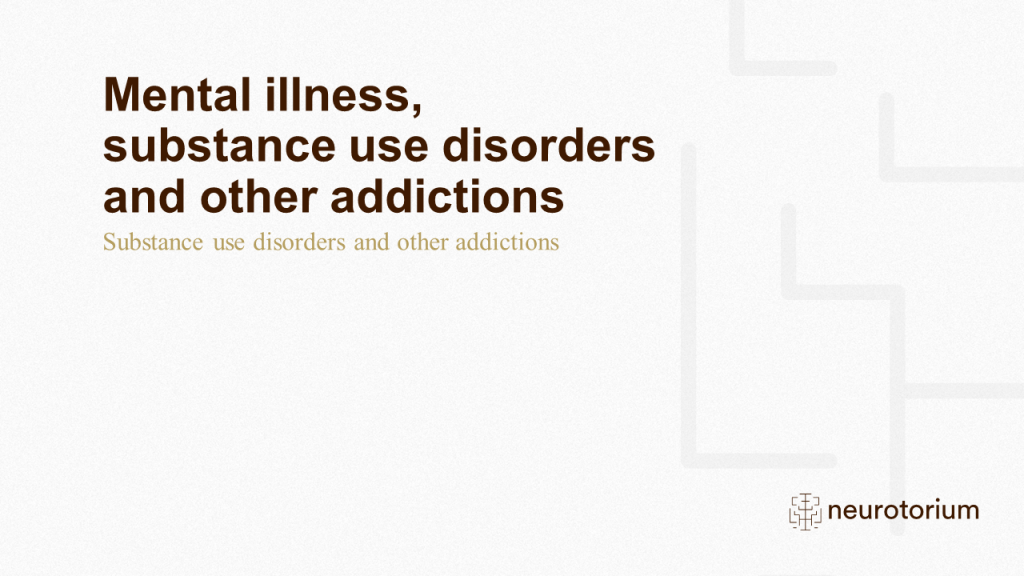
Mental illness, substance use disorders and other addictions
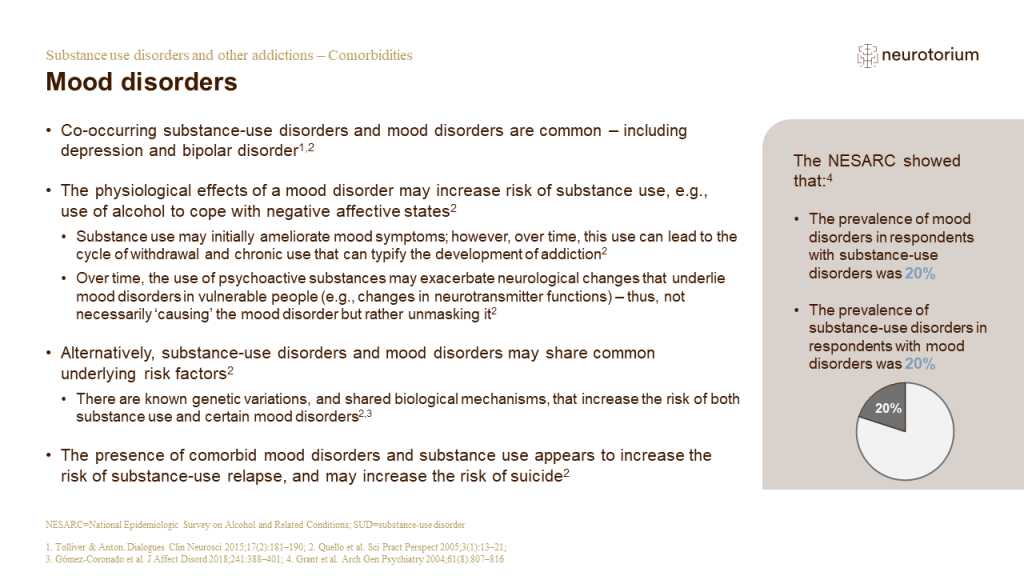
Mood disorders
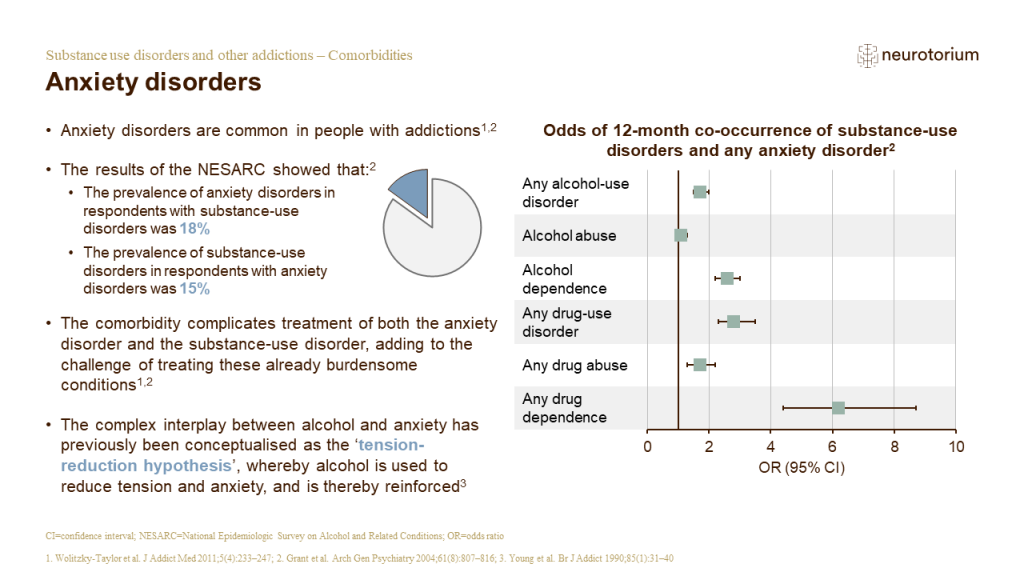
Anxiety disorders
Researchers used data from the Australian National Survey of Mental Health and Wellbeing, a household survey including 8,841 Australians aged 16–85 years old, to study the comorbidities of substance-use disorder and anxiety disorders.[4] The 12-month prevalence of substan…
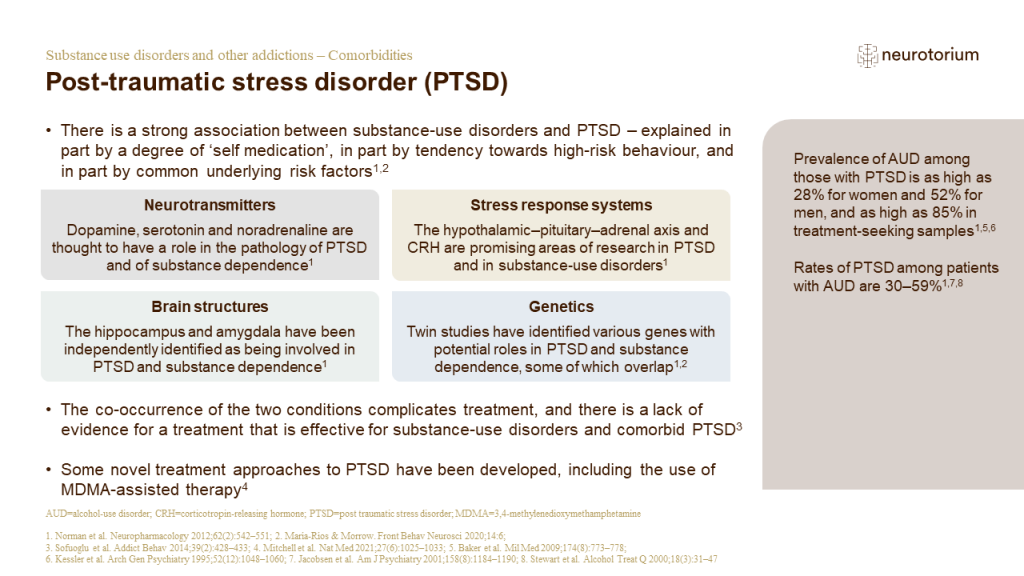
Post-traumatic stress disorder (PTSD)
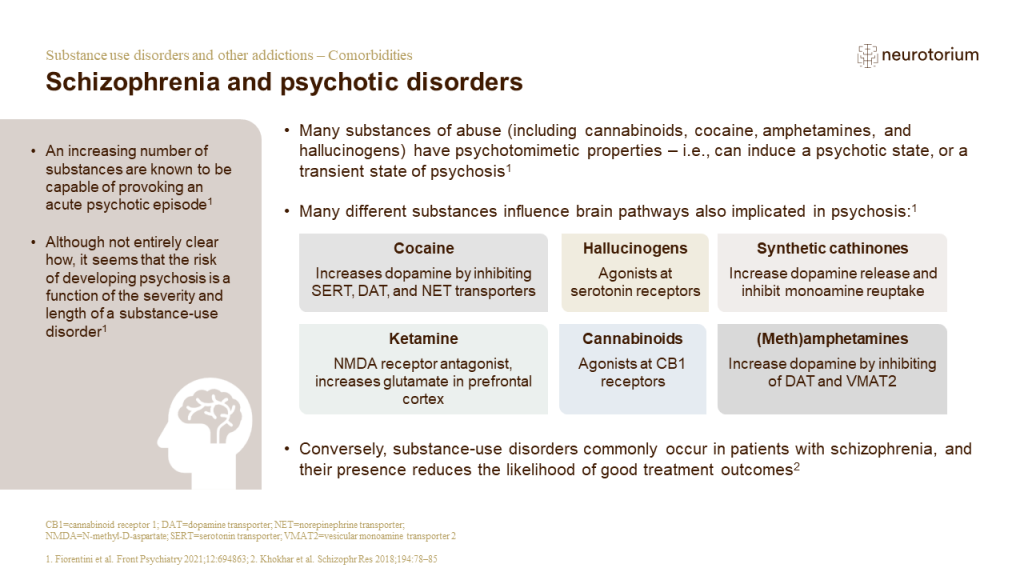
Schizophrenia and psychotic disorders
As outlined on the slide, many substances interact with the dopamine system of the brain, as well as with other neurotransmitter systems, dysregulation of which may lead to psychotic symptoms or schizophrenia.[1] It has been proposed that, if schizophrenia and substance-u…


